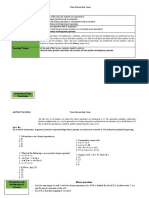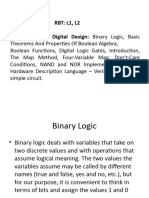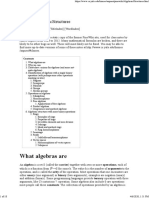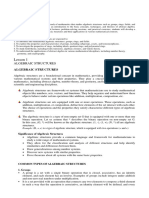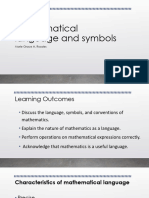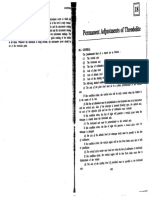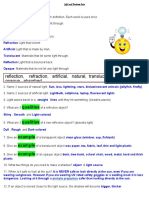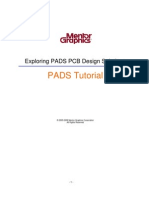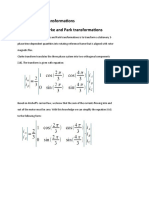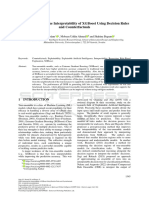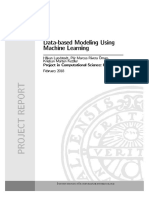7/30/24, 1:54 PM Algebraic Structure in Discrete Mathematics - javatpoint
Home DMS DBMS DS DAA Graph Theory Control System Aptitude Selenium Kotlin
https://www.javatpoint.com/algebraic-structure-in-discrete-mathematics 1/16
�7/30/24, 1:54 PM Algebraic Structure in Discrete Mathematics - javatpoint
ADVERTISEMENT
Algebraic Structure in Discrete Mathematics
The algebraic structure is a type of non-empty set G which is equipped with one or more than one
binary operation. Let us assume that * describes the binary operation on non-empty set G. In this
case, (G, *) will be known as the algebraic structure. (1, -), (1, +), (N, *) all are algebraic structures.
(R, +, .) is a type of algebraic structure, which is equipped with two operations (+ and .)
Binary Operation of Set
In the binary operation, binary stands for two. A binary operation is a type of operation that needs
two inputs, which are known as the operands. When we perform multiplication, division, addition, or
subtraction operations on two numbers, then we will get a number. The two elements of a set are
associated with binary operations. The result of these two elements will also be in the same set. So
we can say that if we perform a binary operation on a set, then it will perform calculations that
combine two elements of the set and generate another element that belongs to the same set.
Let us assume that there is a non-empty set called G. A function f from G × G to G is known as the
binary operation on G. So f: G × G → G defines a binary operation on G.
https://www.javatpoint.com/algebraic-structure-in-discrete-mathematics 2/16
�7/30/24, 1:54 PM Algebraic Structure in Discrete Mathematics - javatpoint
Examples of Binary operation
In this example, we will take the two natural numbers or two real numbers and perform binary
operations such as addition, multiplication, subtraction, and division on these numbers. The algebraic
operation on two natural numbers or real numbers will generate a result. If we get a natural number
or real number as a result, then we will consider that binary operation in our set.
Addition:
We will learn about addition, which is a binary operation. Suppose we have two natural numbers(a, b).
Now if we add these numbers, then it will generate a natural number as a result. For example:
Suppose there are 6 and 8 two natural numbers and the addition of these numbers are
6 + 8 = 14
Hence, the result 14 is also a natural number. So, we will consider an addition in our set. The same
process will be followed for real numbers as well.
+: N + N → N is derived by (a, b) → a + b
+: R + R → R is derived by (a, b) → a + b
Multiplication:
Now we will learn multiplication, which is a binary operation. If we multiply two natural numbers (a,
b), then it will generate a natural number as a result. For example: Suppose there are 10 and 5 two
natural numbers and the multiplication of these numbers are:
https://www.javatpoint.com/algebraic-structure-in-discrete-mathematics 3/16
�7/30/24, 1:54 PM Algebraic Structure in Discrete Mathematics - javatpoint
10 * 5 = 50
Hence, the result 50 is also a natural number. So we will consider multiplication in our set. The same
process will be followed for real numbers as well.
+: N × N → N is derived by (a, b) → a × b
+: R × R → R is derived by (a, b) → a × b
Subtraction:
Now we will learn subtraction, which is a binary operation. If we subtract two real numbers (a, b), then
it will also generate a real number as a result. The same process will not be followed for natural
numbers, because if we take two natural numbers to perform binary subtraction, then it is not
compulsory that it will generate a natural number. For example: Suppose we take two natural
numbers 5 and 7 and the subtraction of these numbers are
5 - 7 = -2
Hence, the result is not a natural number. So we will not consider subtraction in our set.
- : R x R → R is derived by (a, b)→ a - b
Division
Now we will learn division, which is a binary operation. If we divide two real numbers (a, b), then it
will also generate a real number as a result. The same process will not be followed for natural
numbers, because if we take two natural numbers to perform binary division, then it is not
compulsory that it will generate a natural number. For example: Suppose we take two natural
numbers 10 and 6 and the division of these numbers is
https://www.javatpoint.com/algebraic-structure-in-discrete-mathematics 4/16
�7/30/24, 1:54 PM Algebraic Structure in Discrete Mathematics - javatpoint
10/6 = 5/3
Hence, the result 5/3 is not a natural number. So we will not consider division in our set.
- : R - R → R is derived by (x, y) → x - y
Properties of Algebraic structure
Commutative: Suppose set G contains a binary operation *. The operation * is called to be
commutative in G if it holds the following relation:
x * y= y * x for all x, y in G
Associative: Suppose set G contains a binary operation *. The operation * is called to be associative
in G if it holds the following relation:
https://www.javatpoint.com/algebraic-structure-in-discrete-mathematics 5/16
�7/30/24, 1:54 PM Algebraic Structure in Discrete Mathematics - javatpoint
(x*y)*z = x *( y*z) for all x, y, z in G
Identity: Suppose we have an algebraic system (G, *) and set G contains an element e. That element
will be called an identifying element of the set if it contains the following relation:
x * e = e * x = x for all x
Here, element e can be referred to as an identity element of G, and we can also see that it is
necessarily unique.
Inverse: Suppose there is an algebraic system (G, *), and it contains an identity e. We will also assume
that the set G contains the elements x and y. The element y will be called an inverse of x if it satisfies
the following relation:
x*y=y*x=e
Here, element x can also be referred to as inverse of y, and we can also see that it is necessarily
unique. The inverse of x can also be referred to as x-1 like this:
https://www.javatpoint.com/algebraic-structure-in-discrete-mathematics 6/16
�7/30/24, 1:54 PM Algebraic Structure in Discrete Mathematics - javatpoint
x * x-1 = x-1 * x = e
Cancellation Law: Suppose set G contains a binary operation *. The operation * is called to be left
cancellation law in G if it holds the following relation:
x * y = x * z implies y = z
It will be called the right cancellation law if it holds the following relation:
y * x = z * x implies y = z
Types of Algebraic structure
There are various types of algebraic structure, which is described as follows:
ADVERTISEMENT
Semigroup
Monoid
Group
Abelian Group
https://www.javatpoint.com/algebraic-structure-in-discrete-mathematics 7/16
�7/30/24, 1:54 PM Algebraic Structure in Discrete Mathematics - javatpoint
All these algebraic structures have wide application in particular to binary coding and in many other
disciplines.
Semi Group
Suppose there is an algebraic structure (G, *), which will be known as semigroup if it satisfies the
following condition:
Closure: The operation * is a closed operation on G that means (a*b) belongs to set G for all a,
b∈
Associative: The operation * shows an association operation between a, b, and c that means
a*(b*c) = (a*b)*c for all a, b, c in G.
Note: An algebraic structure is always shown by semigroup.
Example 1:
The examples of semigroup are (Matrix, *) and (Set of integer, +).
Example 2:
The semigroup contains a set of positive integers with an additional or multiplication operation. The
positive integers will not contain zero. For example: Suppose we have a set G, which contains some
positive integers except zero such as 1, 2, 3, and so on like this:
G = {1, 2, 3, 4, 5, …..}
https://www.javatpoint.com/algebraic-structure-in-discrete-mathematics 8/16
�7/30/24, 1:54 PM Algebraic Structure in Discrete Mathematics - javatpoint
This set contains the closure property because according to closure property (a * b) belongs to
G for every element a, b. So in this set, (1*2) = 2 ∈
This set also contains the associative property because according to associative property (a +
b) + c = a + (b + c) belongs to G for every element a, b, c. So in this set, (1 + 2) + 3 = 1 + (2 +
3) = 6 ∈
Monoid:
A monoid is a semigroup, but it contains an extra identity element (E or e). An algebraic structure (G,
*) will be known as a monoid if it satisfies the following condition:
Closure: G is closed under operation * that means (a*b) belongs to set G for all a, b ∈
Associative: Operation * shows an association operation between a, b, and c that means a*
(b*c) = (a*b)*c for all a, b, c in G.
Identity Element: There must be an identity in set G that means a * e = e * a = a for all x.
Note: An algebraic structure and a semigroup are always shown by a monoid.
Example 1:
In this example, we will take (Set of integers, *), (Set of natural numbers, +), and (Set of whole
numbers, +). Where
Monoid is shown by (Set of Integers, *) because 1 is an integer and it is also an identity
element.
https://www.javatpoint.com/algebraic-structure-in-discrete-mathematics 9/16
�7/30/24, 1:54 PM Algebraic Structure in Discrete Mathematics - javatpoint
Monoid is not shown by (Set of natural numbers, +) because there is not an identity element,
but it is a semigroup.
Monoid is shown by (Set of whole numbers, +) because it contains 0 as the identity element.
Example 2:
The monoid contains a set of positive integers with additional or multiplication operations except
zero. For example: Suppose we have a set G, which contains some positive integers like 1, 2, 3, and
so on like this:
G = {1, 2, 3, 4, 5, …..}
This set contains the closure property because according to closure property (a * b) belongs
to G for every element a, b. So in this set, (1*2) = 2 and so on.
This set contains the associative property because according to associative property (a + b) +
c = a + (b + c) belongs to G for every element a, b, c. So in this set, (1 + 2) + 3 = 1 + (2 + 3) =
5, and so on.
This set also contains the identity property because according to this property a * e = e * a =
a, where a ∈ So in this set, (2 × 1) = 2, (3 × 1) = 3, and so on. In our case, 1 is the identity
element.
Group:
A Group is a monoid, but it contains an extra inverse element, which is denoted by 1. An algebraic
structure (G, *) will be known as a group if it satisfies the following condition:
Closure: G is closed under operation * that means (a*b) belongs to set G for all a, b ∈
Associative: * shows an association operation between a, b, and c that means a*(b*c) = (a*b)*c
for all a, b, c in G.
Identity Element: There must be an identity in set G that means a * e = e * a = a for all a.
Inverse Element: It contains an inverse element that means a * a-1= a-1 * a = e for a ∈
Note: An algebraic structure, semigroup, and monoid are always shown by a Group.
Example 1:
https://www.javatpoint.com/algebraic-structure-in-discrete-mathematics 10/16
�7/30/24, 1:54 PM Algebraic Structure in Discrete Mathematics - javatpoint
The examples of group are Matrix multiplication and (Z, +).
Example 2:
In this example, we will use the matrix multiplication operation on the set of non-singular matrices N
× N from a group.
If we perform multiplication of non-singular matrices N × N, then it will also be a non-singular
matrix N × N, which holds the property of closure.
Matrix multiplication itself holds the property of association. So it is also associative.
The identity matrix is contained in the set of non-singular matrices N × N, which holds the
property of identity element.
As we have seen that all the matrices are non-singular. So they will contain the inverse
elements, which will be also non-singular matrices. Hence, it also holds the property of
inverse.
Abelian Group
An abelian group is a group, but it contains commutative law. An algebraic structure (G, *) will be
known as an abelian group if it satisfies the following condition:
Closure: G is closed under operation * that means (a*b) belongs to set G for all a, b ∈
Associative: * shows an association operation between a, b, and c that means a*(b*c) = (a*b)*c
for all a, b, c in G.
Identity Element: There must be an identity in set G that means a * e = e * a = a for all a.
Inverse Element: It contains an inverse element that means a * a-1= a-1 * a = e for a ∈
https://www.javatpoint.com/algebraic-structure-in-discrete-mathematics 11/16
�7/30/24, 1:54 PM Algebraic Structure in Discrete Mathematics - javatpoint
Commutative Law: There will be a commutative law such that a * b = b * a such that a, b
belongs to G.
Note: (Z, +) is an Abelian group because it is commutative, but matrix multiplication is not
commutative that's why it is not an abelian group.
Example: Suppose we have a set G, which contains some positive integers except zero such as 1, 2, 3,
and so on with additional operations like this:
G = {1, 2, 3, 4, 5, …..}
This set contains the closure property because according to closure property (a + b) belongs
to G for every element a, b. So in this set, (1 + 2) = 2 ∈ G and so on.
This set also contains the associative property because according to associative property (a +
b) + c = a + (b + c) belongs to G for every element a, b, c. So in this set, (1 + 2) + 3 = 1 + (2 +
3) = 6 ∈ G and so on.
This set also contains the identity property because according to this property (a * e) = a,
where a ∈ So in this set, (2 × 1) = 2, (3 × 1) = 3, and so on. In our case, 1 is the identity
element.
This set also contains the commutative property because according to this property (a * b) =
(b * a), where a, b ∈ So in this set, (2 × 3) = (3 × 2) = 6 and so on.
← Prev Next →
https://www.javatpoint.com/algebraic-structure-in-discrete-mathematics 12/16
�7/30/24, 1:54 PM Algebraic Structure in Discrete Mathematics - javatpoint
Youtube For Videos Join Our Youtube Channel: Join Now
Feedback
Send your Feedback to feedback@javatpoint.com
Help Others, Please Share
Learn Latest Tutorials
Splunk tutorial SPSS tutorial Swagger T-SQL tutorial
tutorial
Splunk SPSS Transact-SQL
Swagger
Tumblr tutorial React tutorial Regex tutorial Reinforcement
learning tutorial
Tumblr ReactJS Regex
Reinforcement
Learning
R Programming RxJS tutorial React Native Python Design
tutorial tutorial Patterns
RxJS
R Programming React Native Python Design
Patterns
Python Pillow Python Turtle Keras tutorial
tutorial tutorial
Keras
https://www.javatpoint.com/algebraic-structure-in-discrete-mathematics 13/16
�7/30/24, 1:54 PM Algebraic Structure in Discrete Mathematics - javatpoint
Python Pillow Python Turtle
Preparation
Aptitude Logical Verbal Ability Interview
Reasoning Questions
Aptitude Verbal Ability
Reasoning Interview Questions
Company
Interview
Questions
Company Questions
Trending Technologies
Artificial AWS Tutorial Selenium Cloud
Intelligence tutorial Computing
AWS
Artificial Selenium Cloud Computing
Intelligence
Hadoop tutorial ReactJS Data Science Angular 7
Tutorial Tutorial Tutorial
Hadoop
ReactJS Data Science Angular 7
Blockchain Git Tutorial Machine DevOps
Tutorial Learning Tutorial Tutorial
Git
Blockchain Machine Learning DevOps
B.Tech / MCA
https://www.javatpoint.com/algebraic-structure-in-discrete-mathematics 14/16
�7/30/24, 1:54 PM Algebraic Structure in Discrete Mathematics - javatpoint
DBMS tutorial Data Structures DAA tutorial Operating
tutorial System
DBMS DAA
Data Structures Operating System
Computer Compiler Computer Discrete
Network tutorial Design tutorial Organization and Mathematics
Architecture Tutorial
Computer Network Compiler Design
Computer Discrete
Organization Mathematics
Ethical Hacking Computer Software html tutorial
Graphics Tutorial Engineering
Ethical Hacking Web Technology
Computer Graphics Software
Engineering
Cyber Security Automata C Language C++ tutorial
tutorial Tutorial tutorial
C++
Cyber Security Automata C Programming
Java tutorial .Net Python tutorial List of
Framework Programs
Java Python
tutorial
Programs
.Net
Control Data Mining Data
Systems tutorial Tutorial Warehouse
Tutorial
Control System Data Mining
Data Warehouse
https://www.javatpoint.com/algebraic-structure-in-discrete-mathematics 15/16
�7/30/24, 1:54 PM Algebraic Structure in Discrete Mathematics - javatpoint
https://www.javatpoint.com/algebraic-structure-in-discrete-mathematics 16/16


















